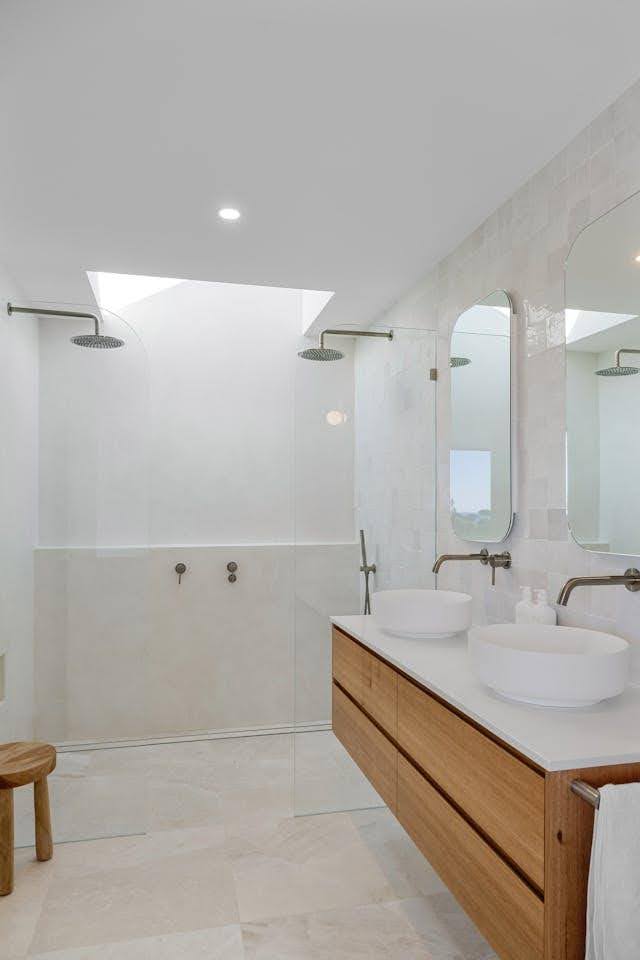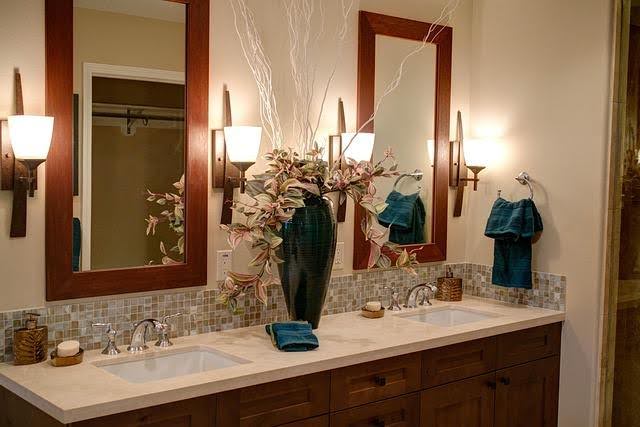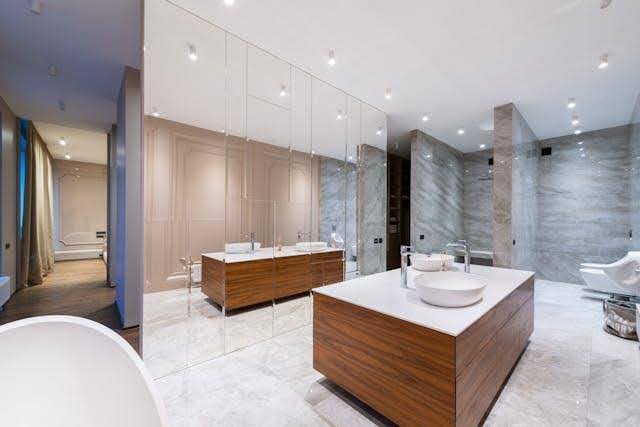Remodeling a bathroom begins with picking a vanity to fit your needs. The market dazzles homeowners with an array of materials; however, wood, with its incredible warmth and charm, carries a special charm with most people.
Combining wood with an acrylic top increases durability, grounds the piece, and extends its longevity. Gharpedia’s breakdown of bathroom vanity top materials covers everything from granite and quartz to laminate and acrylic — helping you weigh durability, maintenance, and style.
Oak vanities with acrylic tops offer a warm, low‑maintenance combo – read this guide to explore how each surface performs so you can choose what fits your space best.
The gentle texture and natural grain of wood like oak creates an environment that instantly invites and comforts, qualities sought by busy homeowners who want to relax in this space after a long day.
Still, when selecting wood for your vanity, some quirks need to be considered like the moisture and humidity that dominate the space, posing the greatest challenge for wood. Because this material is natural, it’s prone to deforming or warping and mold with prolonged exposure to moisture.
A worst-case-scenario would be to invest in a beautiful cabinet only for black mod to appear sooner rather than later or to have its appearance ruined from material distortion – a significant waste.
For bathroom cabinetry, Wood Magazine recommends finishes that fight humidity and moisture — comparing water-based coatings, alkyd-resin varnish, and polyurethane in terms of durability, ease of repair, and impact on wood tone – Choose a humidity-fighting finish for bathrooms .
Wood Materials That Balance Durability and Visual Interest in a Humid Space

Homeowners favor wood bathroom vanity since these provide style and warmth in the space. While they are stunning, they can also be vulnerable to the humidity and moisture.
Protection is an essential step before the vanity is installed. The wood surface should be coated with a uniform layer of wood wax oil or waterproof paint for a solid foundation to extend the vanity’s longevity.
Moisture removal can be sped up by taking advantage of bathroom ventilation or using the exhaust fan promptly following showers to keep the wood dry. Another tactic is to place natural dehumidifiers like quicklime or bamboo charcoal in the room’s corners to absorb excess moisture.
Picking a wooden vanity involves looking beyond the appearance to understand the characteristics of each wood to find the ideal fit for your room. Let’s explore woods suited for bathroom vanities.
Oak
Oak is a popular pick for the bathroom cabinetry. Examples from Malaysia and Thailand are ideal due to the climate which matches well with a standard environment.
Oak is hard and durable, the perfect material for a 48″ double sink bathroom vanity with an acrylic top. Acrylic enhances the strength and extends the furniture’s lifespan.
Oak is scratch and wear-resistant and can tolerate heavy daily use for grooming and personal care. It has excellent drying properties to diminish warping and cracking caused by humidity and moisture. After drying, the moisture content can reduce to as low as 10 percent.
Oak offers incredible practicality and value when considering performance, price, and overall durability.
Teak
Teak is known as “king of decay and moisture resistance” in the world of wood. It contains natural oils that behave like waterproof coating. This makes the wood well-suited to the humidity of a bathroom.
It is resistant to pest damage and rot and mold. Teak can tolerate fluctuations in humidity and temperature. It develops a patina and fine grain over time for artistic elegance.
Still, buyers are warned to exercise caution when shopping for this material due to high prices and an increasing frequency for counterfeited products.
Black walnut
There is a sophistication to the rich dark tones and natural smooth grain of black walnut, seen often in luxurious designs. The structure brings a strong compressive strength, dense structure, and high durability to maintain the integrity and attractiveness over time.
It’s also holds steady and stable in humid conditions with rare instances of deforming or warping. A downside of this material is that skilled craftship is required during processing. Mishandling can cause cracking. Experienced manufacturers are more suited for developing these products.
Cedar
Cedar is a naturally fragrant wood that creates a pleasant and fresh ambiance in the space. It also offers moisture-resistant properties and natural pest repellant. When properly treated, cedar performs well in humid and damp atmospheres without distorting or warping.
The easy workability and lighter weight make it perfect for varied shapes and styles, especially for those who prefer a Japanese or minimalist appeal. Cedar is a softer wood than other woods and can be easily dented or scratched. That means you’ll need a careful daily maintenance schedule.
Pine
Pine is accessible and abundant, an affordable wood, making it practical for budget conscious clients. The wood is lightweight and straightforward and simple to work with, suited for small spaces and personalized designs. The soft, natural grain of pine offers an inviting and comfortable feel.
The downsides include poor moisture resistance and low hardness. The material can absorb water when exposed to humid rooms, swell, and develop mold. It’s because of these traits that pine must undergo anti-corrosion treatment and water-resistant coatings to perform well in the bathroom environment.
Acacia

Acacia is a hardwood known for its high durability and stunning appearance. It provides strong compressive strength, high density, and effectively resists damage from impacts or scratches to maintain structure integrity and visual appeal over time.
Whether left natural or stained, the soft tone and fine grain create a refined, elegant environment. The high price point and costs associated with difficult processing due to the hardiness make it suited for buyers demanding the highest quality and incredible aesthetics.
Final Thought
Even the best wood can’t tolerate neglect. The vanity should be inspected every few months for water stains, cracks, mold, or loose and rusty hardware. Addressing minor issues early often prevents major problems later.
Don’t forget to wax and clean the surface with non-alkaline soapy water and allow it to completely dry.
Apply a generous amount of wood wax oil or furniture was and repeatedly polish with a dry, soft cloth to restore the natural luster and boost stain and water resistance.

